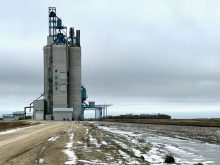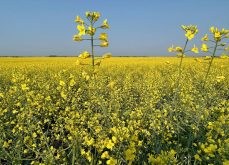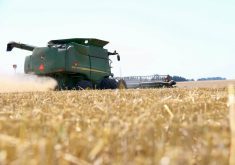MarketsFarm — Canola production is on different paths in Canada and Australia, according to the respective attachés from the U.S. Department of Agriculture (USDA).
For the world’s top two canola exporters, the attachés forecast production in Canada to remain steady and project strong gains for Australia.
USDA’s Foreign Agricultural Service (FAS) published the reports Monday, a few days ahead of the scheduled release of the department’s April world agricultural supply and demand estimates (WASDE).
The USDA attaché in Canada noted several issues with its canola industry, particularly last fall’s poor weather conditions. The attaché, Erin Danielson, noted more than two per cent of Canada’s canola remained in the fields to overwinter and was uncertain as to how much would be harvested in the spring.
Read Also

Huge crops in South America says analyst
Although there’s a debate over the size of the South American soybean crop, there’s little doubt that it will be an enormous one, said consultant Michael Cordonnier of Soybean and Corn Advisor in Hinsdale, Ill.
Also, the late-harvested canola contained high moisture of 12 to 15 per cent, which posed increased risk for the crop’s deterioration in the bin.
Although Canada’s canola exports to China dropped sharply during the 2019-20 marketing year, Danielson said significant increases in exports to the European Union, Bangladesh, Pakistan and the United Arab Emirates helped offset the drop of about 70 per cent in exports to China.
Also, Danielson wrote, rail blockades this year, along with the strike at Canadian National Railway in November, a rockslide across a CN track in British Columbia and cold weather combined to delay canola shipments to the ports of Vancouver and Prince Rupert. The current COVID-19 pandemic has added another major problem.
The attaché also noted the strong uptick in Canada’s canola crush.
Danielson projected nearly 8.5 million hectares (about 21 million acres) are likely to be planted to canola by Canadian farmers in 2020-21, with 8.4 million to be harvested. Production was forecast at 19 million tonnes and the attaché expects exports to be nine million tonnes. Domestic use is to consume 9.7 million tonnes, with a carryover of more than 3.2 million.
Increase expected for Australia
After years of drought, Australia received heavy rains following devastating wildfires throughout the country. Those rains, particularly in the states of New South Wales and Western Australia, are to push canola production upward by 800,000 tonnes in 2020-21, according to USDA’s attachés Zeljko Biki and Levin Flake.
If their projections hold, Australia would produce about 3.1 million tonnes of canola in the coming marketing year. Although an improvement, it would still be short of the 10-year average of almost 3.3 million tonnes of canola.
Another factor fueling the increase is improved canola prices in Australia. The attachés noted canola was priced about A$80 higher per tonne compared to this time last year.
However, they point to the years of drought that curtailed farm incomes, which could mean Australian farmers may not have sufficient resources for the higher input costs associated with canola compared to wheat and barley.
Biki and Flake predicted Australia’s canola exports to improve by 600,000 tonnes in 2020-21, to about 2.2 million tonnes. Also, they forecast domestic consumption to remain steady at 800,000 tonnes.
The attachés put the area to be harvested in the coming marketing year at more than 2.3 million hectares (5.6 million acres). They estimated the carryover to be 481,000 tonnes.
— Glen Hallick reports for MarketsFarm from Winnipeg.















